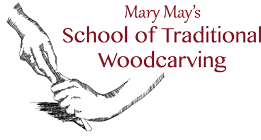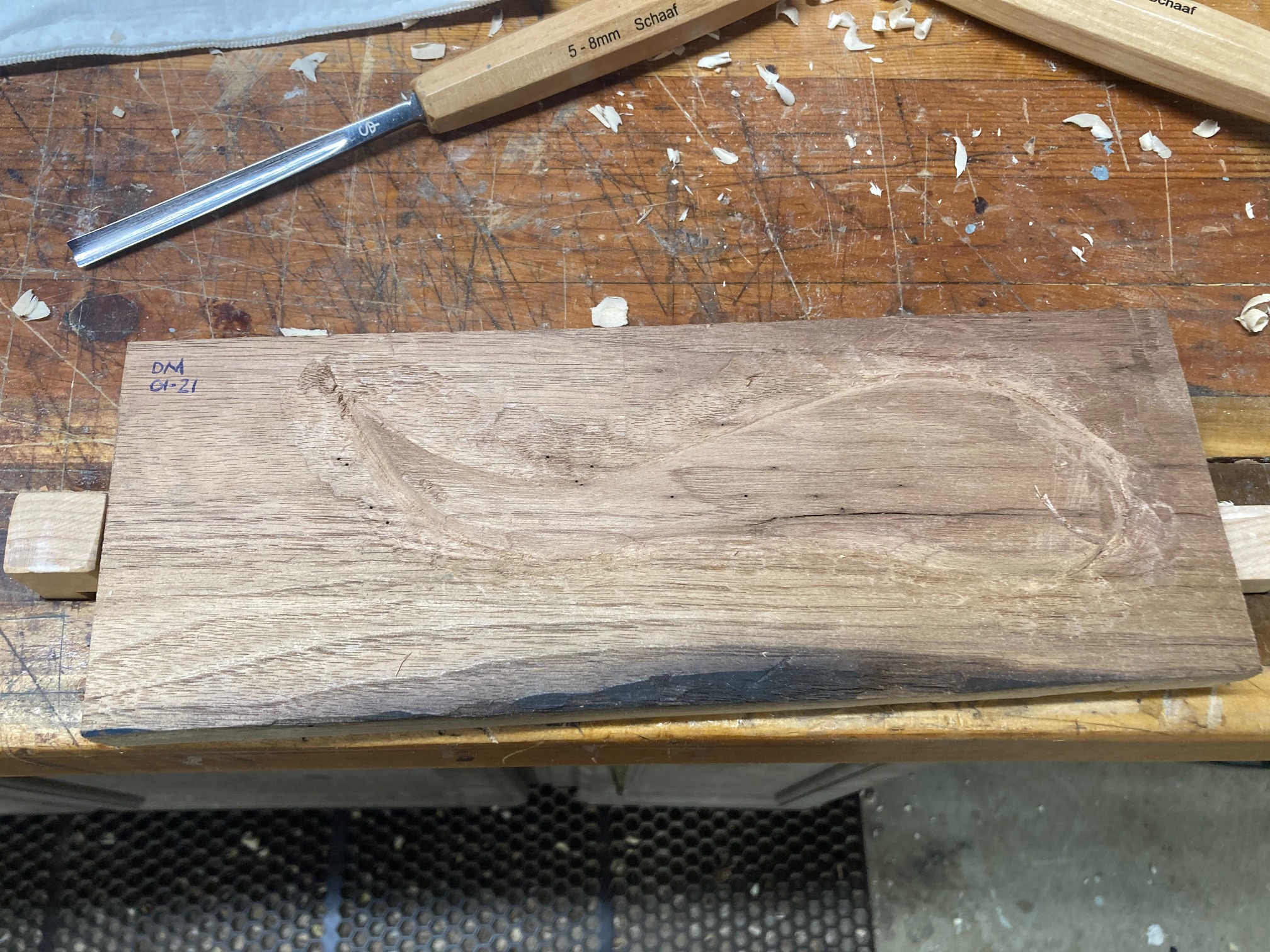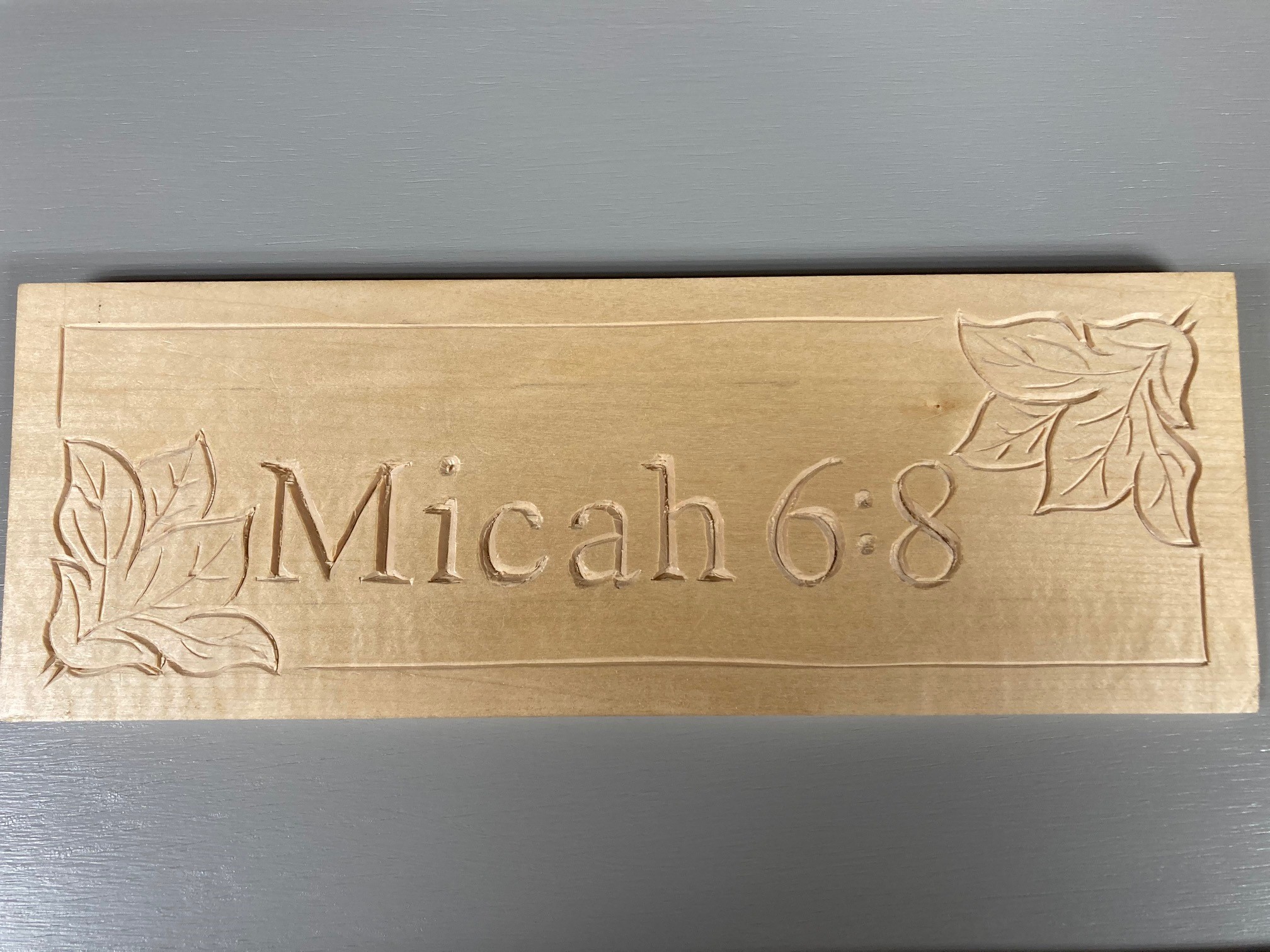Butternut
Quote from Douglas Morse on January 11, 2021, 11:24 pmI'm just getting started in carving and everyone seems to recommend butternut as a good second choice to basswood. Basswood doesn't grow here so, other than mail-order, it is expensive and only available in small pieces at the artsy stores. I've never worked with or even seen butternut, but my local wood supplier got some in so I bought one board to experiment with. I'm finding it to be a lot different than I expected. This is a fairly dark wood with pronounced and visible figure. Very reminiscent of walnut, but quite lighter in color. Although it carves ok, the distinct and obvious figure hides the carving. Did I get a odd-ball batch or is this what butternut is supposed to look like?
Thanks for any comments!
Doug
I'm just getting started in carving and everyone seems to recommend butternut as a good second choice to basswood. Basswood doesn't grow here so, other than mail-order, it is expensive and only available in small pieces at the artsy stores. I've never worked with or even seen butternut, but my local wood supplier got some in so I bought one board to experiment with. I'm finding it to be a lot different than I expected. This is a fairly dark wood with pronounced and visible figure. Very reminiscent of walnut, but quite lighter in color. Although it carves ok, the distinct and obvious figure hides the carving. Did I get a odd-ball batch or is this what butternut is supposed to look like?
Thanks for any comments!
Doug
Uploaded files:
Quote from MaryMay on January 13, 2021, 8:06 pmHi Doug,
That is pretty typical of butternut. It's much more figured, and I think a more interesting grain than basswood. You captured the look correctly because it is actually called "white walnut" and is in the walnut family - just much softer. So because of the possibility of distraction with of the figured grain, you do need to consider what design you will be carved. Simpler, less complex designs work better. I love working with butternut when I want to make it look like oak or other hardwood.
Hi Doug,
That is pretty typical of butternut. It's much more figured, and I think a more interesting grain than basswood. You captured the look correctly because it is actually called "white walnut" and is in the walnut family - just much softer. So because of the possibility of distraction with of the figured grain, you do need to consider what design you will be carved. Simpler, less complex designs work better. I love working with butternut when I want to make it look like oak or other hardwood.
Quote from Douglas Morse on January 14, 2021, 1:37 amThank you Mary.
I can't really imagine a relief carving project where this wood might be appropriate. Perhaps in a full 3D object (?). I'm also trying to pick up chip-carving and, at least so far, the stuff I've done just disappears into the figure of the wood. It carves OK but the finished product is almost invisible. 🙁 I can certainly see why basswood is the material of choice for both disciplines.
Enjoying the videos and the learning process. You do a great job of presenting the material in an understandable and logical manner. I just wish I'd started learning this 30 years ago! LOL
Thanks again for your help and for making this learning experience accessible.
Blessings!
Doug
Thank you Mary.
I can't really imagine a relief carving project where this wood might be appropriate. Perhaps in a full 3D object (?). I'm also trying to pick up chip-carving and, at least so far, the stuff I've done just disappears into the figure of the wood. It carves OK but the finished product is almost invisible. 🙁 I can certainly see why basswood is the material of choice for both disciplines.
Enjoying the videos and the learning process. You do a great job of presenting the material in an understandable and logical manner. I just wish I'd started learning this 30 years ago! LOL
Thanks again for your help and for making this learning experience accessible.
Blessings!
Doug
Uploaded files:Quote from MaryMay on January 14, 2021, 9:17 amThank you! I'm glad you are enjoying the lessons.
I have used the technique of sealing the butternut with shellac and then applying a brown stain or glaze and wiping it off, leaving the stain in the deeper areas. With the stain setting into the deep areas, it really gives it a lovely antique affect, looking like it is vintage oak. But yes, I would avoid carving in butternut if there are really fine, delicate details. It can easily get lost in the grain. This goes for any very figured wood.
Thank you! I'm glad you are enjoying the lessons.
I have used the technique of sealing the butternut with shellac and then applying a brown stain or glaze and wiping it off, leaving the stain in the deeper areas. With the stain setting into the deep areas, it really gives it a lovely antique affect, looking like it is vintage oak. But yes, I would avoid carving in butternut if there are really fine, delicate details. It can easily get lost in the grain. This goes for any very figured wood.


